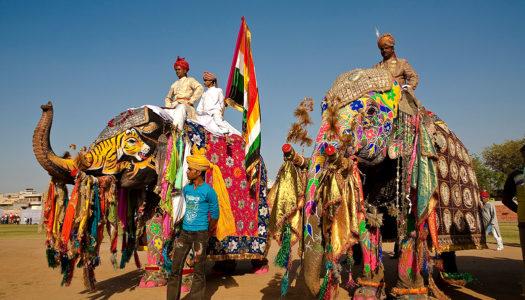The only reason people tend to wait for the Summer months, despite its scorching hot weather, is the onset of Mangoes! It is during these flaming days that you will see fruit sellers sitting with huge baskets of your favorite fruit. India receives an abundant harvest of Mangoes during the summer season. The Mangoes of India are not just sold within the country but also exported to other parts of the world. The sweet and juicy taste attracts a lot of fans, and that is why it is rightly called the King of all fruits.
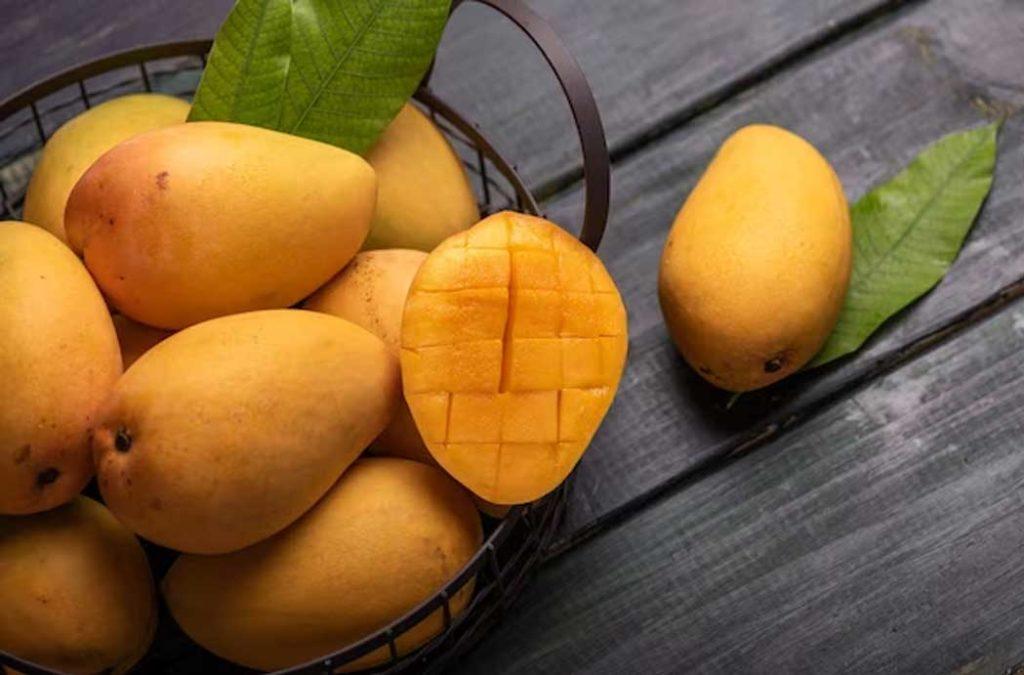
If you ask a Mango lovers about their summer diet, they will start with a Mango milkshake in the morning and end the day with Aam Panna in the evening. People travel across the country to get a taste of the different Mango varieties in India. The flavor of the ‘aam’ that you bite on in Gujarat will not be the same as the one you pick in Andhra Pradesh. India is home to 1500 different types of this same fruit!
If you are planning to go on a trip to get a mouthful of the best Mangoes of India, you should start NOW! Also, Treebo Hotels are available in all the leading locations that are known for their unique mango crops. Apart from the places we are going to discuss in this blog, the Treebo family has also been serving 1000+ hotels in 120+ cities in the country. Check into your rooms, fetch your market bags, and go grab some fresh and juicy fruit for yourself!
Here are the 15 different types of Mangoes of India that you should not miss out on –
1. Alphonso Mangoes
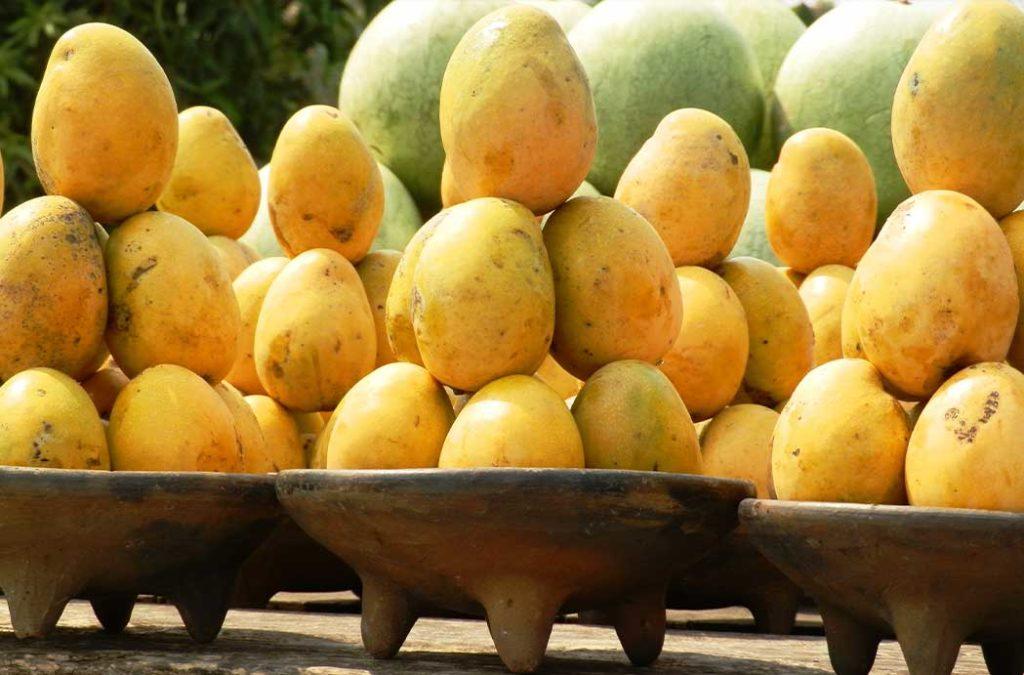
The Alphonso Mangoes get their name from the Portuguese General Afonso de Albuquerque. He was a famous military general who played a crucial part in establishing Portuguese colonialism in India. He was the one who carried the Mangoes of India to European land during the 16th Century. And today, the mangoes are known after him. The Alphonsos initially have a vibrant yellow color and develop tinges of orange when they turn ripe. It tastes honey-sweet and has a creamy texture. These Mangoes are the costly variants and are liked by people across the world.
Location: Ratnagiri, Maharashtra
When to buy?: From Early May to Mid-July
2. Dasheri Mangoes
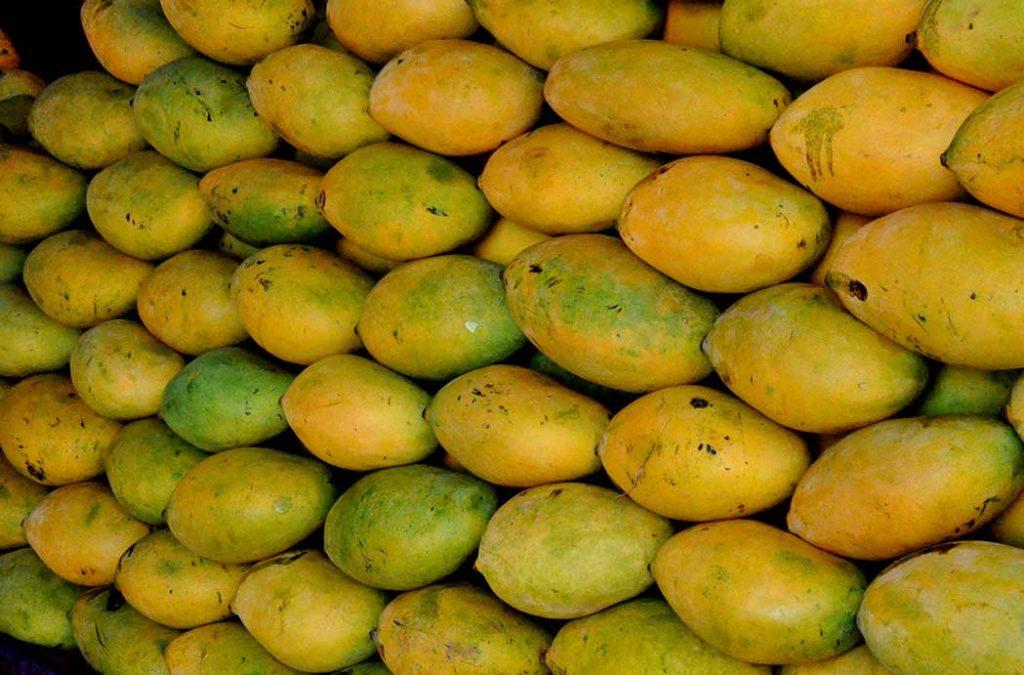
The Dasheri Mangoes of India originated from the Malihabad region of Uttar Pradesh. From there, they have spread like wildfire across the state. They have a honey-sweet and juicy flavor that perfectly balances sweetness and tartness. These Mangoes are oval in shape with a pointed end at the bottom. They have yellow skin with undertones of green. Owing to their creamy texture and juiciness, they are the perfect choice for fruit juices and milkshakes.
Location: Lucknow, Uttar Pradesh
When to buy?: From Mid-May to Early August
3. Kesar Mangoes
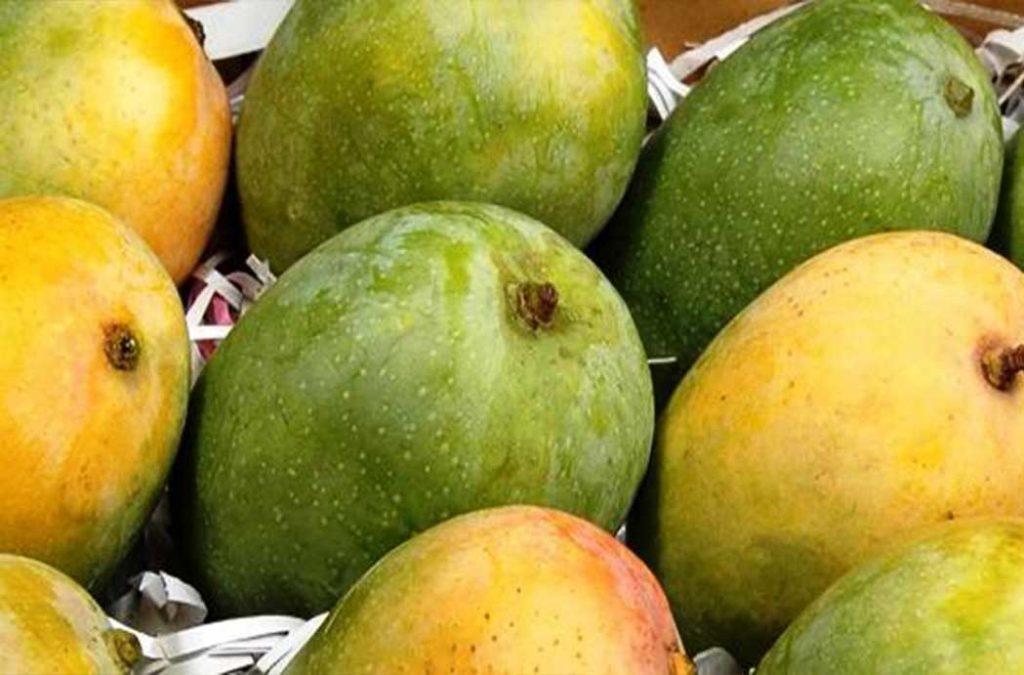
The Kesar Mangoes, also called the Gir Kesar are famous for their luscious flavors and sweet undertones. People describe their taste as a blend of sugary sweetness combined with a subtle hint of apricot. The Kesar Mangoes have a rich saffron color with russeted skin. There are inconspicuous white spots on the outside. They have an oval-shaped flattened body. When you cut the fruit, the flesh is in an impressive golden-yellow color with a creamy texture.
Location: Gir, Gujarat
When to buy?: May to July
4. Himsagar Mangoes
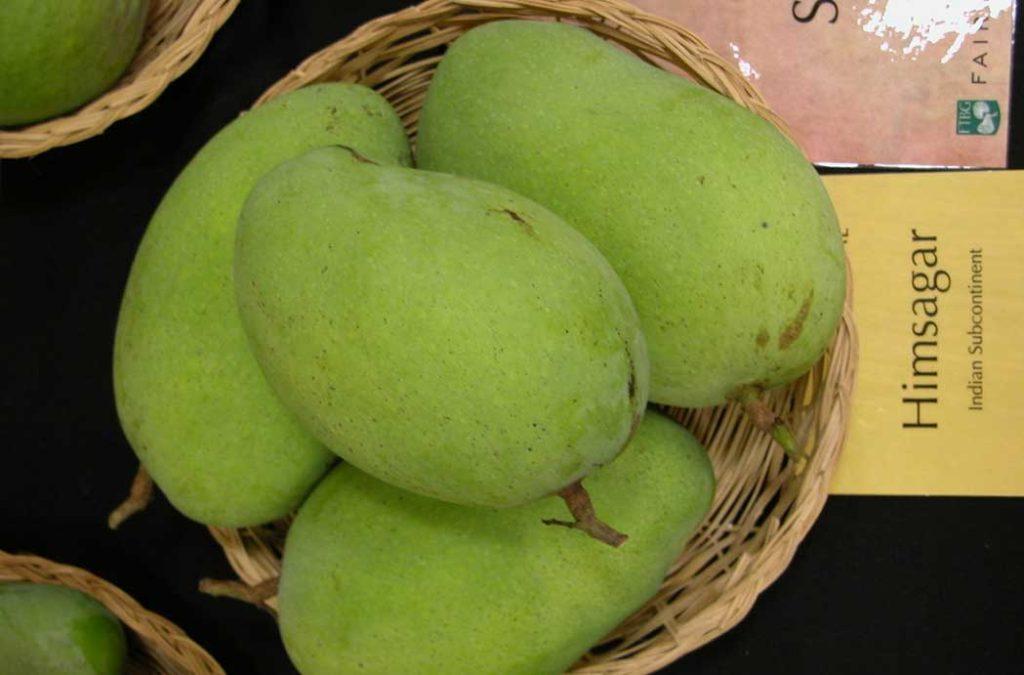
The Himsagar mangoes are the popular choice in the state of West Bengal. They have a unique appearance and taste that attracts mango lovers from across the world. They are medium-sized, oval-shaped fruits with a yellow to orange outer color. They have a smooth and waxy texture when you hold them in your hands. On the inside, the golden-yellow flesh is juicy and fibrous. The seed in the center is small in comparison to other mango variants. The flavor is said to be a perfect blend of sweetness with citrus tones.
Location: Murshidabad, West Bengal
When to buy?: Early May to Mid-June
5. Totapuri Mangoes
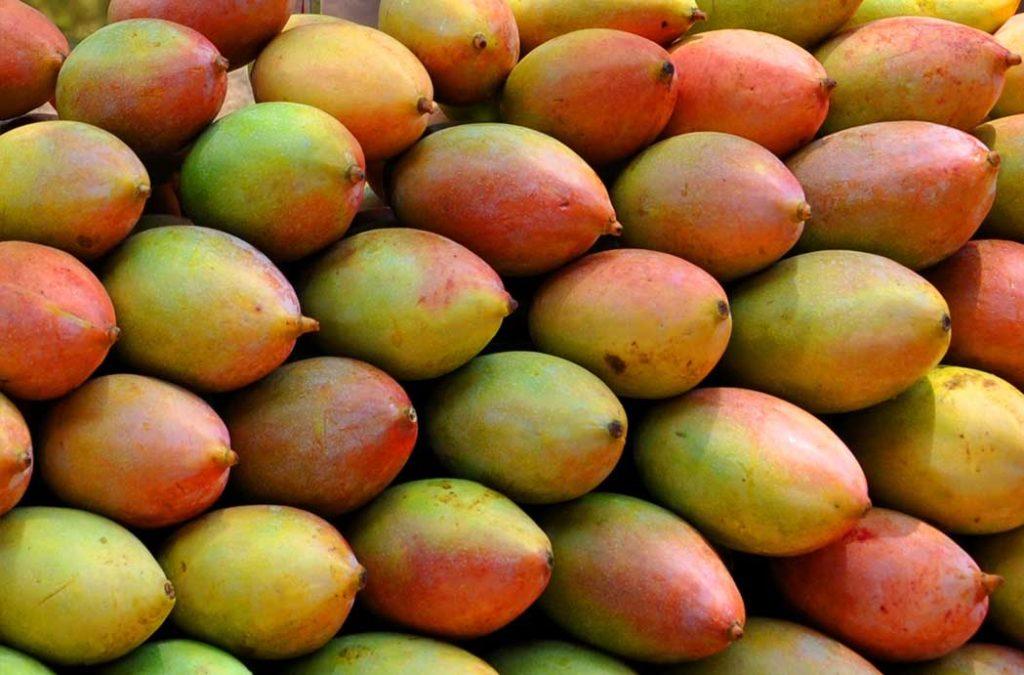
Totapuri Mangoes of India have a very unique shape that makes them stand out from the rest of the variants. They are medium-sized elongated fruits that are green when unripe. They turn yellow with green undertones when they become ripe. The mango has a tangy and sour taste with very minimal sweetness. It is not as juicy as the rest of the mango variants. Owing to its astringent aftertaste and strong skin, it is mostly used for making pickles and Indian cuisines like Mango Dal, Mango rice, and Mango chutney among others.
Location: South Indian belt. Mostly found in Bangalore, Karnataka
When to buy?: May to July
6. Chausa Mangoes
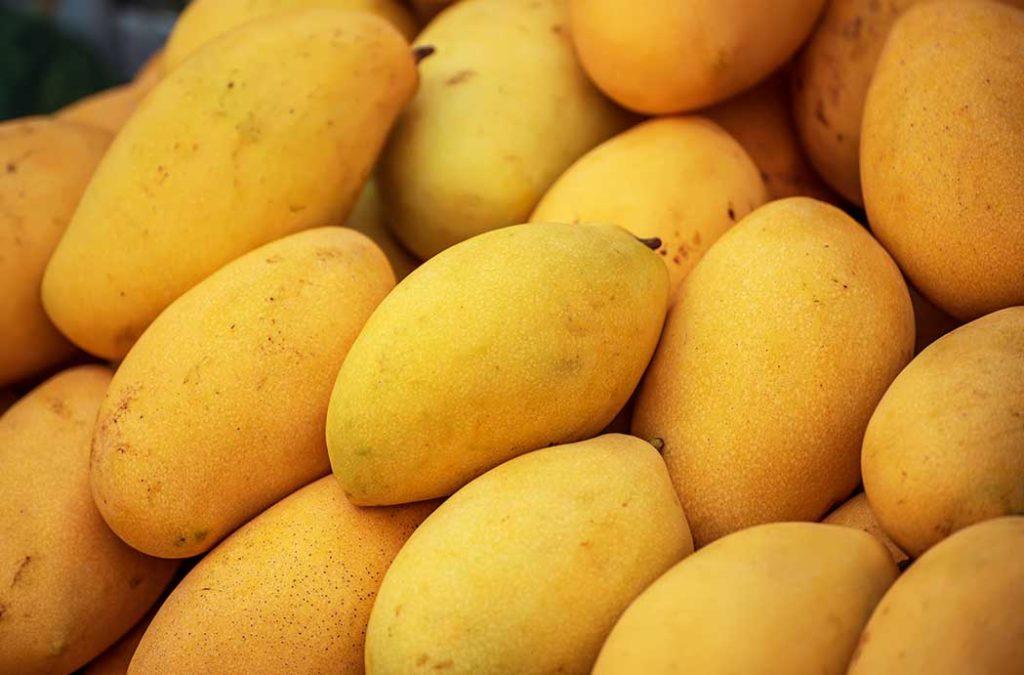
The Chausa Mangoes of India are the most-loved variants in the northern parts of the country. The fruit is large and oval-shaped with a distinct curve at one end. It has golden-yellow skin with subtle greenish tones to enhance the overall appearance. The flesh is bright orange in color and mesmerizingly juicy! The flavors of Chausa will make your eyes grow wide in wonder. It has a pleasant sweetness with citrus and spicy tones. After you eat the Mango, it leaves a floral taste on your palate.
Location: Uttar Pradesh and Bihar
When to buy?: End of June to August
7. Langra Mangoes
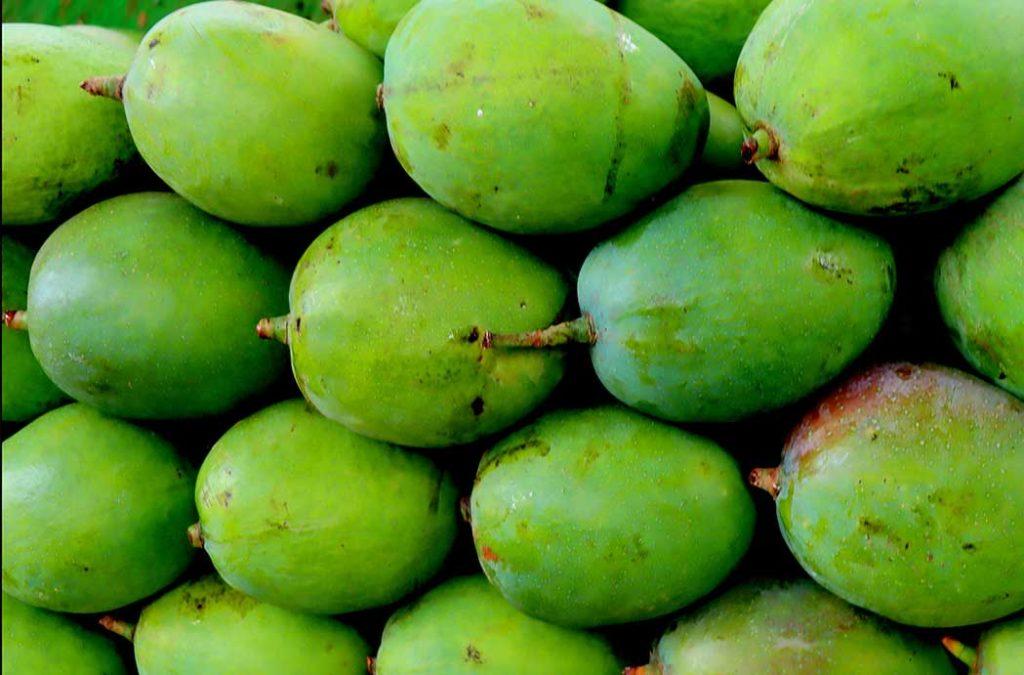
The Langra Mangoes have greenish-yellow skin with a slightly rough texture. When you hold the fruit in your hands and gently move your palm over it, you will feel the subtle friction. It is small-sized mango with greenish-yellow color when unripe and turns lemon yellow with green undertones on ripening. The flesh has no fiber and tastes sweet and tarty. It has a conspicuous honey-like aroma, one of the reasons travelers run to fetch some Langras for themselves.
Location: Varanasi, Uttar Pradesh
When to buy?: June to July
8. Banganapalle Mangoes
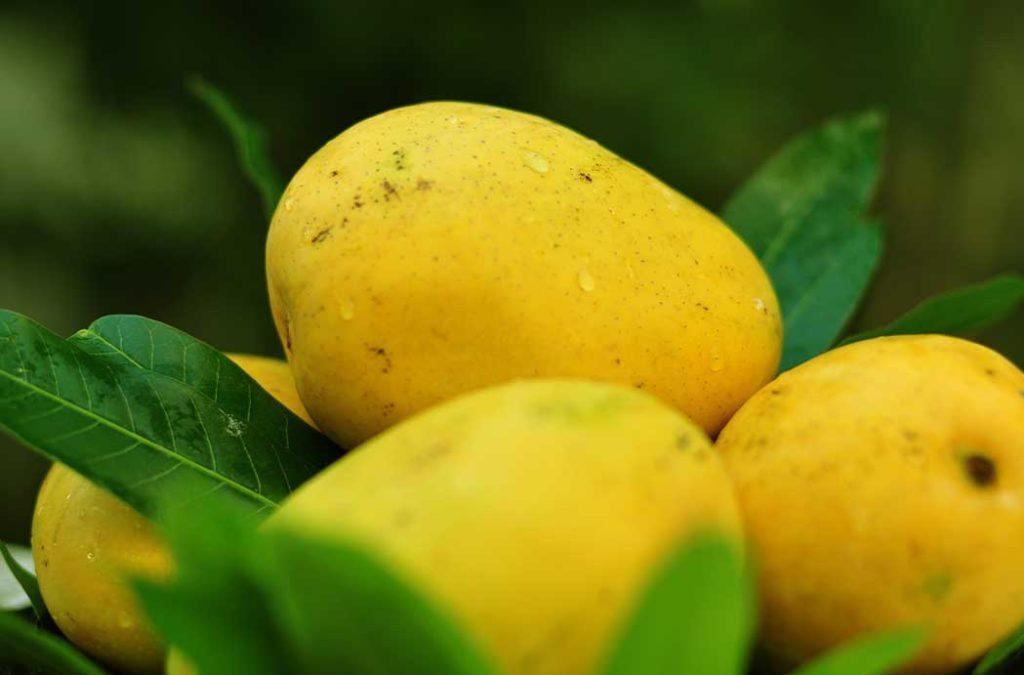
The Banganapalle Mangoes in India are known for their rich honey-like scent and juicy flesh. There is hardly any fiber inside and the mango melts on your tongue. It has a bright yellow color on the outside with smooth and thin skin. Initially, the mango tastes sweet and sour with notes of citrus. However, when they reach the ripened state, they are pleasantly sweet with a floral aftertaste. These are the perfect choice to make juices, milkshakes, and desserts.
Location: Andhra Pradesh
When to buy?: April to June
9. Mulgoba Mangoes

Also called the Malgoa Mangoes of India, these are popular picks across the South Indian states. The fruits are big and long in shape with a greenish-yellow color to the outer skin. They give out a delicate floral fragrance, something that people compare with rose petals. When you eat this mango, you’ll notice that the flavor is a blend of fresh tanginess and honey-like sweetness. It leaves a pleasant aftertaste.
Location: Chennai, Tamil Nadu, and Karnataka
When to buy?: April to July
10. Neelam Mangoes
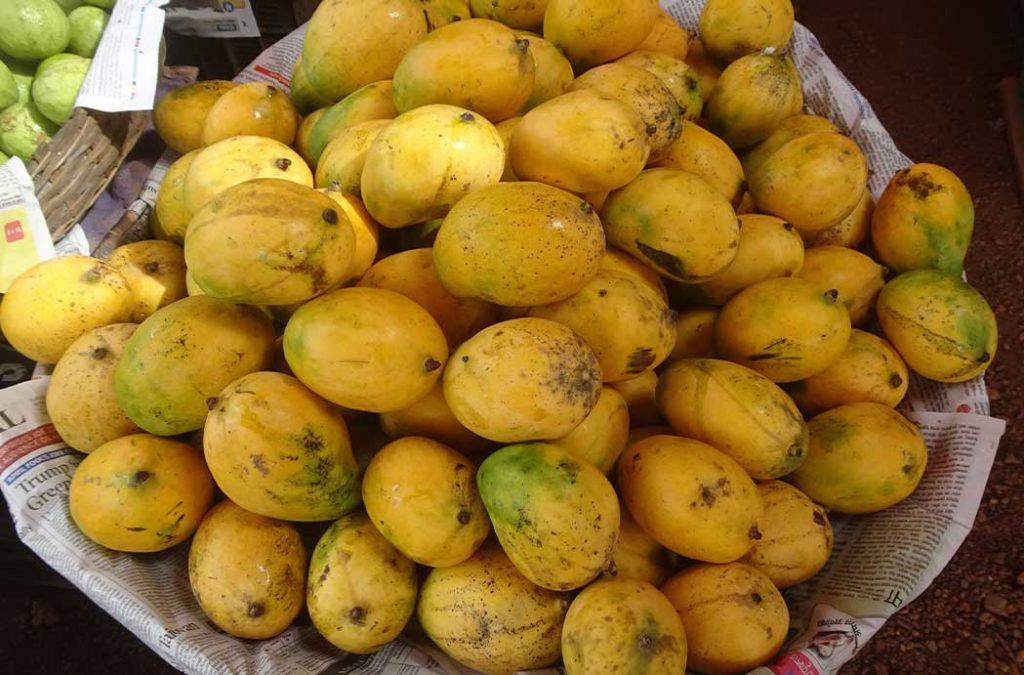
Neelam mango is a favorite in the city of Nizams, Hyderabad. It is popular for its unique appearance. The Mango has an oval shape, smooth texture, and golden-yellow skin with occasional red spots. The bright yellow flesh is soft and tender and melts on the tongue! The taste is a perfect mix of sweetness and sourness and will remind you of other tropical fruits like peaches. It leaves a sugar-sweet aftertaste.
Location: Hyderabad, Telangana along with Andhra Pradesh and Tamil Nadu
When to buy?: May to July
11. Mankurad Mangoes from Goa
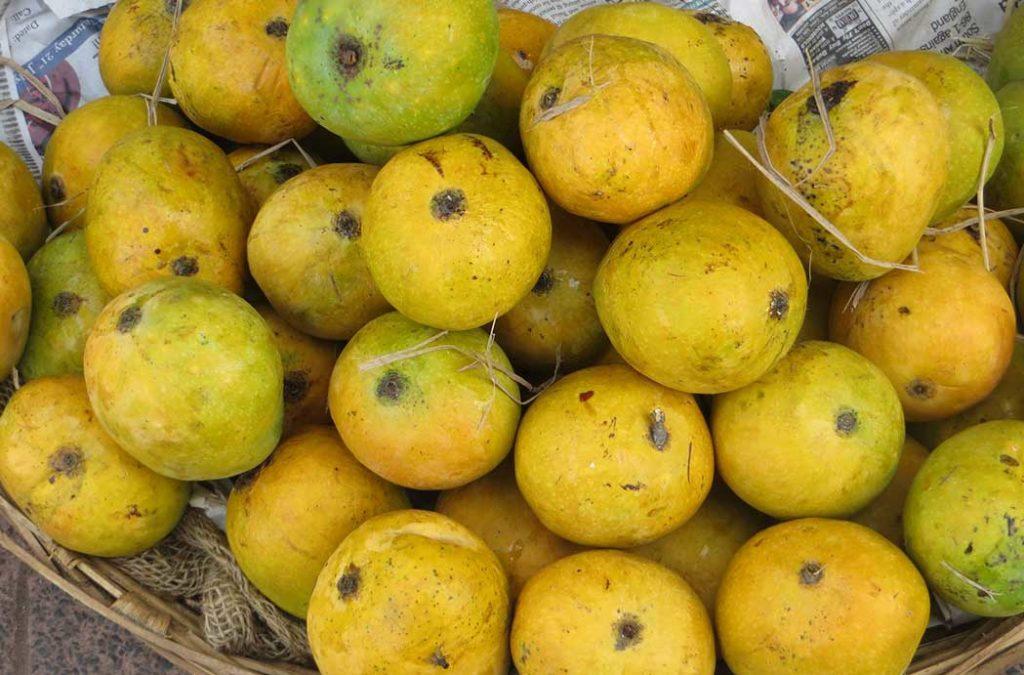
Goa is not just famous for its party spots and beaches! If you ask the locals, they will vouch for the perfect sweetness of the Mankurad Mangoes. Some would go about to say that they are better than the Alphonso Mangoes of India! These mangoes are big and oval-shaped with a large seed in the center. They come in a bright yellow color but you will notice red and green undertones in a few of them. The taste is a perfect mix of sweet, sour, and citrusy. They are the ideal choice for desserts. And since it is Goa, don’t be surprised if you find them in your cocktails and mocktails in the summer months!
Location: Goa
When to buy?: Early April to June
If you are planning to go to the party capital of the country, you might also want to check out the Goa Itinerary for 4 Days: Complete Details and Information.
12. Paheri Mangoes
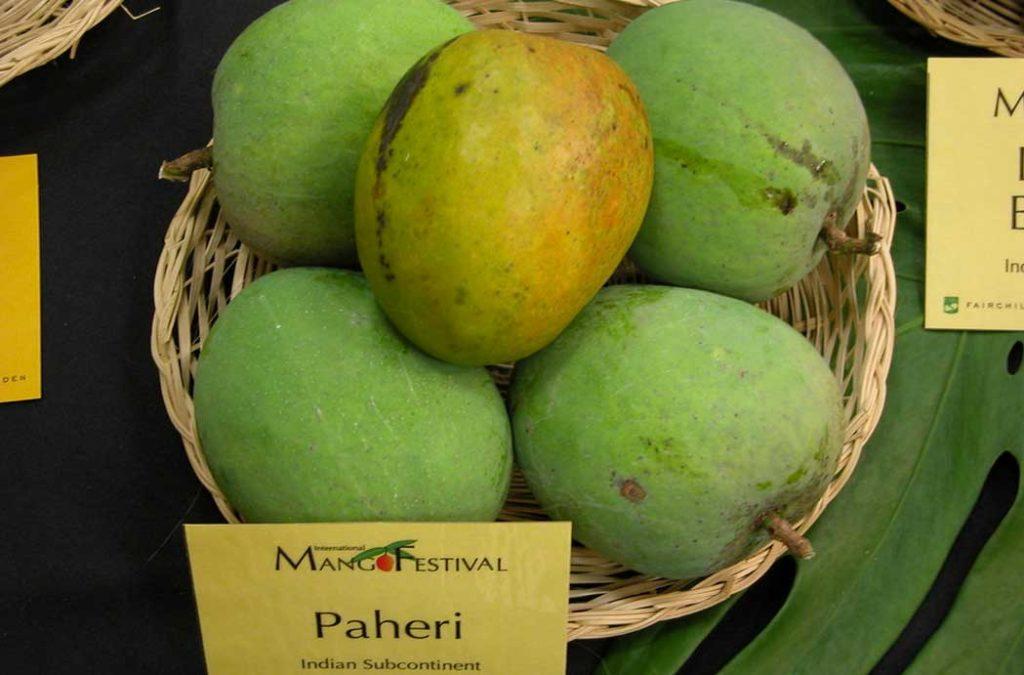
Paheri Mangoes are beautiful to see and delicious to eat! They have a medium, oval-sized shape with a greenish-yellow color. It appears like the fruit is blushing a deep shade of red when it ripens. The pulp is thick, juicy, and soft. When you take a bite of this mango, it leaves a rich taste of tanginess on your tongue that changes into honey-like sweetness in a split second. Also called the Pairi Mangoes, they are more often used to make Mango Fruit Jams and Preserves.
Location: Maharashtra and Gujarat
When to buy?: April to August
13. Gulaab Khaas Mangoes
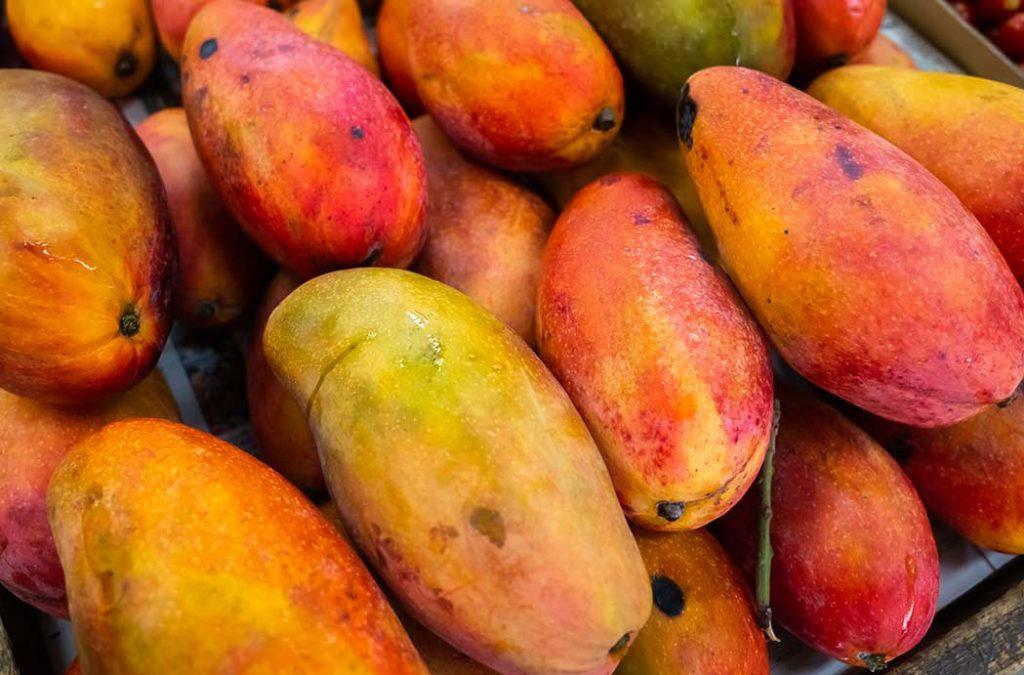
Gulaab Khaas Mangoes of India are classic favorites because of their unique taste and smell. When they are unripened, they have a deep green color that falls close to the olive shade. And when they ripen, they turn to a greenish-yellow color with textured skin. The flesh is thick and velvety and the seed occupies very less space inside. These Mangoes are known for their rich sweetness. You can hardly notice any sourness or tanginess. They smell like newly blossomed rose flowers, and that’s what gives them their name ‘Gulaab Khaas’.
Location: Bihar and Jharkhand
When to buy?: May to July
14. Kilichundan Mangoes
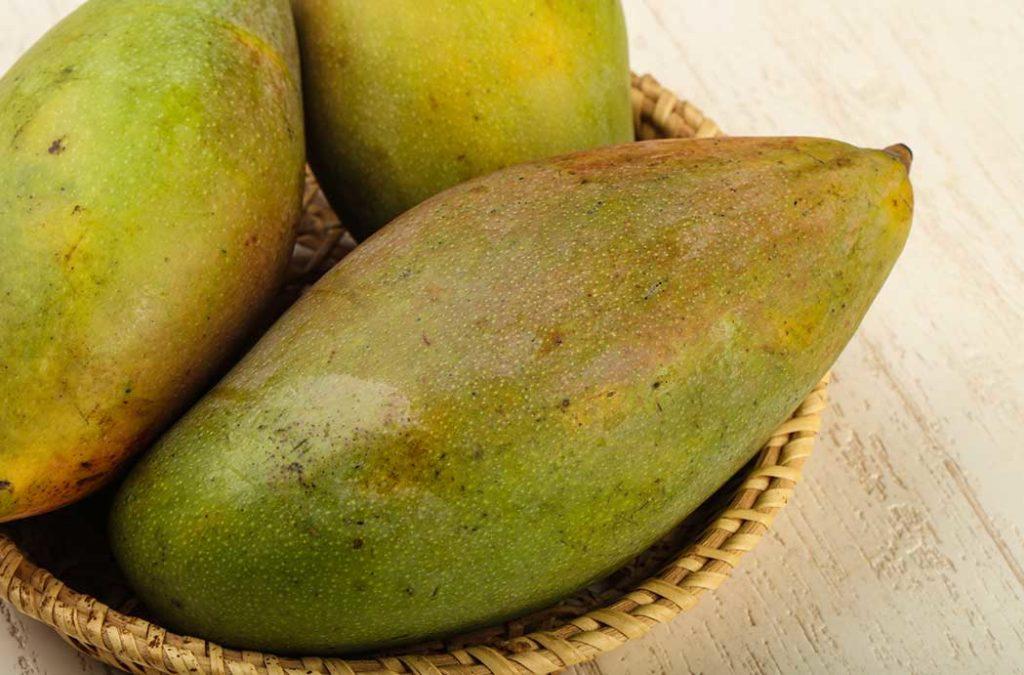
Kilichundan is a very interesting type of Mango available in India. It has an elongated body with the lower half shaped like the beak of a bird. It has a greenish-yellow color that turns to a reddish-orange as you move from the top to the bottom. In the Malayalam language, the word ‘Kilichundan’ means the beak of a bird. And that’s where these Mangoes get their name. The fruit has a citrusy scent and juicy flesh with fiber. It is sweet and tangy with subtle notes of sourness.
Location: Kerala State
When to buy?: Early May to the End of June
15. Bombay Green Mangoes
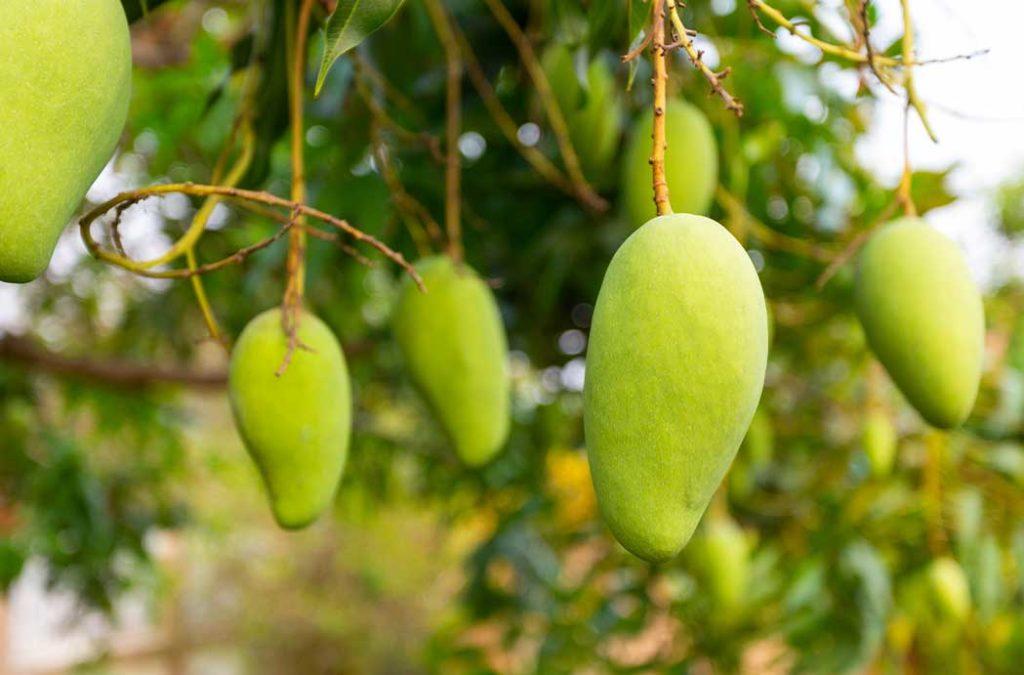
Bombay Green Mangoes are the oval-shaped delights that you need to check out if you are visiting Punjab this season. The skin of the mango is light green with some yellowish patches. It has a sweet taste with hints of citrusy sourness. The name ‘Bombay green’ is a misnomer seeing how these mangoes are not grown anywhere near Bombay. During the colonial era, the British transported these mangoes from the Mumbai port, and that’s how the title comes into existence.
Location: Punjab and West Bengal
When to buy?: May to July
The Largest Mango Festival in India – Delhi
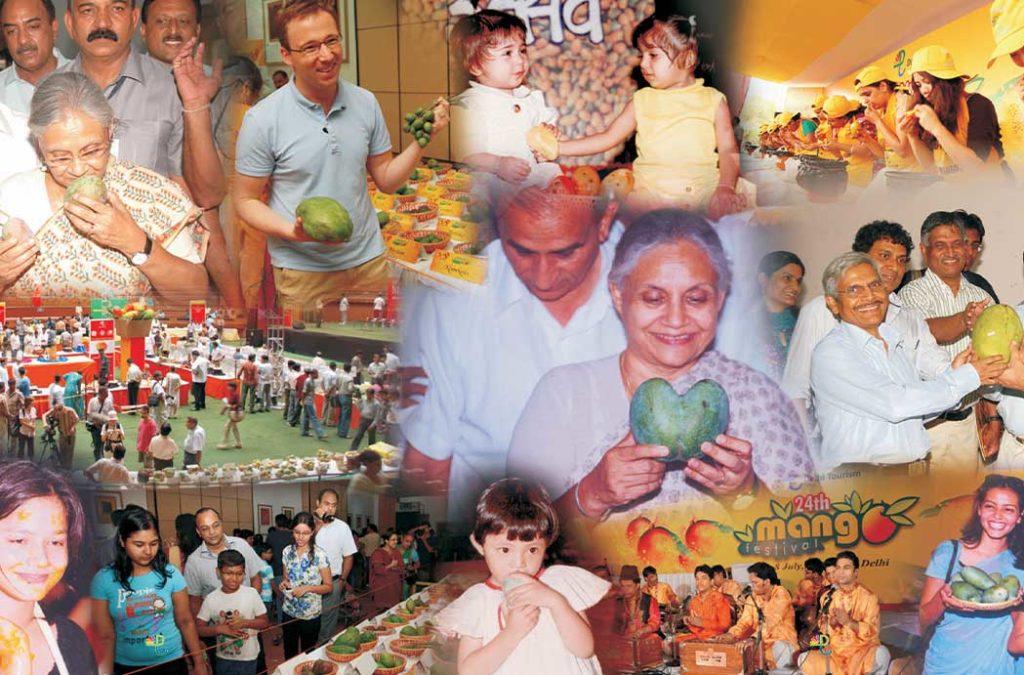
The Delhi Tourism and Transportation Development Corporation (DTTDC) in collaboration with the Agricultural and Processed Food Products Export Development Authority (APEDA) conducts a National Mango Festival in Dilli Haat every year in the early days of July. It displays the different Mango varieties from across the country and also conducts events like mango-eating competitions, carving demonstrations, quiz contests, and cooking competitions where chefs showcase their skills by preparing delicious mango-based dishes. Travelers should not miss out on this experience!
You can reach Delhi by airways and railways or choose a scenic road trip to the capital city of India. There are affordable Treebo Hotels closer to the Dilli Haat area. You can check into them for however long you want.
These 15 different Mangoes of India only constitute 1% of the total variants available in the country! Thanks to the tropical climate, Mangoes can grow abundantly in our native soil. So, pack your bags, book your tickets, and begin your journey toward discovering the best Mango selling cities in India!


















